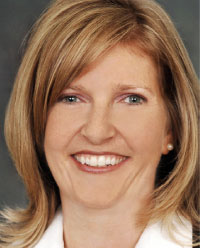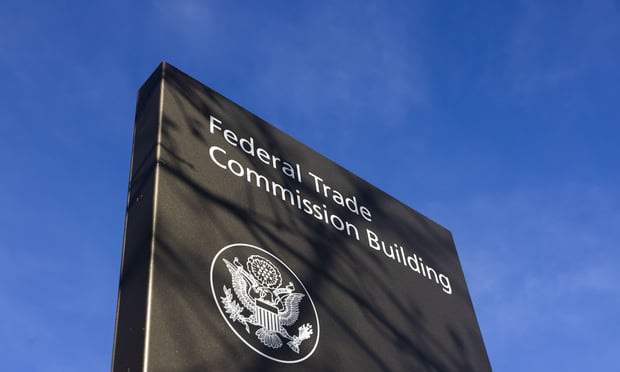 Colleen Ostrowski, treasurer and vice president ofinvestor relations at $2 billion ITT Corp., recently helped achievewhat some in her organization, including Ostrowski herself attimes, thought might be impossible—carving three investment-gradecompanies out of the legacy $11 billion diversified manufacturerwithin one year.
Colleen Ostrowski, treasurer and vice president ofinvestor relations at $2 billion ITT Corp., recently helped achievewhat some in her organization, including Ostrowski herself attimes, thought might be impossible—carving three investment-gradecompanies out of the legacy $11 billion diversified manufacturerwithin one year.
Over the course of 2011, ITT shunted its defense and waterbusinesses into separate companies, Exelis and Xylem, and emerged atrimmer company with four never-before combined business lines thatmanufacture products for the energy, aerospace, and transportationindustries, among others. At the end of the year, each of the threecompanies had an investment-grade rating as a result of Ostrowski'scareful oversight of structure and balance sheet.
|The successful spinoff is one of the accomplishments Ostrowskiis proudest of. She also counts it among her greatest learningexperiences, because it showed her the structure and strengths ofeach business and allowed her to communicate that to the investmentcommunity. That experience in taking a lead role in communicatingwith the rating agencies and investors led to Ostrowski's taking onan additional role in investor relations this year.
|“It helps me be a better treasurer, because it helps me getcloser to the businesses,” she says. “Because I understand thebusinesses so well, I am able to help promote the right treasurypolicies and practices. And then also being close to the feedbackfrom the investor community helps me with the capital allocationprocess. It's a win-win.”
|Ostrowski, 39, spent 10 years in finance and treasury at Pfizerprior to joining ITT in 2010.
| How did you come to work infinance?
How did you come to work infinance?
When I went into business school, Iexpected to go into marketing. That's what I had done prior tobusiness school. I really liked it, and I thought that's where mytalents were. But in my first finance class, I realized I was muchmore interested in finance and much stronger at it. I took theopportunity to work at Pfizer as an intern over the summer, where Iended up in treasury, and really fell in love with it.
I was able to go back after I finished business school, and Iwent through a finance rotational program, where you spend sixmonths in four different areas, including treasury, in the pensionarea; Pfizer's treasury center in Dublin; and manufacturingfinance. I especially enjoyed the pension environment.
|You had a key role in working on Pfizer's pension assetsand plan. Do you do the same at ITT?
ITT prior tothe spin had a very large pension plan [with $4 billion in assets].I was the chair of our investment committee. I took some of mylearnings from Pfizer and brought them to ITT. ITT had a moreaggressive investment stance, which resulted in some liquidityconcerns at times. So we worked on marrying assets and liabilitieswhile still trying to get outsized returns. Then, as part of thespin-off, we decided that the large pension plan would go toExelis, the defense business. We have a very small pension now atITT [with $200 million in assets], so there's not as muchdiversification.
Tell me more about the process ofspinning off the defense and water businesses.
Itwas a very complicated process, and a time-constrained one, to spinout the defense and water businesses. We entered the year hoping tocomplete the process in less than a year, from announcement toclose, and we did so. From the beginning, we had the dictate thatwe were going to create three balanced, attractive companies. Andone of the ways we were measuring that was the investment-graderatings.
I was responsible for recommending how we should split theassets and liabilities for the three companies. And in determininghow best to present these companies to the rating agencies, wedecided that it made sense for the defense business, which dealsprimarily with government contracts, to take on the large pensionplan, and we would close it to the commercial businesses, the waterand the ITT businesses. It also made sense that given the type ofbusiness the water business was going to be, because of their goodcash flow in the U.S., they took on the financial debt. And withITT being the legacy business, even though we were the smallest, wekept the legacy liabilities, asbestos and environmental. That's howwe balanced the liabilities, and we were able to achieveinvestment-grade ratings for all three. That was a realachievement, and that got us off to a good start.
|After we got the investment-grade ratings, one of the next stepswas setting up credit lines and new debt structures. For example,we paid off ITT's existing debt and issued new debt in the name ofXylem. Then we set up commercial paper programs and creditrevolvers. We were making sure they were preparing forsuccess as stand-alone entities.
|What was the greatest challenge or learning experiencefrom the spinoffs?
The learning experience was inhelping people, in the investment community and all thestakeholders, understand the new ITT. These four business segmentsthat make up ITT today were not operating together as a stand-alonebusiness before, and so it's really helping people understand whatthe new company is and all the growth opportunity in it.
Why did you recently take on investorrelations?
It allows me to help promote the ITTstory, and explain what this business was to the investing public.During the spin, I got to understand these businesses very well. Aswell, there are many synergies between treasury and investorrelations. And you see them managed together in smallercompanies.
Thinking back on your career so far, what is the mostimportant lesson you have learned?
That themanagement team is very important. One of the reasons I stayed withITT with the spin is because this management team has the highestintegrity of any management team I've ever seen. I've foundthroughout my career that the tone set at the top really doestrickle through the entire organization. It's really important thatyou work for an organization you have a lot of faith in.
Have you had mentors along the way?
[CEO]Denise Ramos has been a wonderful mentor to me. She's a great rolemodel professionally, and also as a woman. Having a mentor is veryimportant. Across my entire career I've had mentors, and I'vesought them out even if there wasn't a formal program.
What advice would you give to someone just starting outin finance?
Always look for your manager. You wantsomeone you can learn from and who's not necessarily only trying tomake a name for themselves, but who can help develop you. Also,take the position that may not be the sexiest job, but where you'rereally going to learn.
Anything you would want to share with readers onachieving (or striving for) work/life balance?
I haveto give a call out to my spouse. Your partner makes it possible. Myhusband is extremely supportive. When you have a supportive spouseor partner, it makes it much more enjoyable, and you can achievethat balance, I think.
For the complete 2012 30 Under 40 list, see Ascending the Corporate Ladder. For last year's list,see Readyto Take Charge.
|Complete your profile to continue reading and get FREE access to Treasury & Risk, part of your ALM digital membership.
Your access to unlimited Treasury & Risk content isn’t changing.
Once you are an ALM digital member, you’ll receive:
- Critical Treasury & Risk information including in-depth analysis of treasury and finance best practices, case studies with corporate innovators, informative newsletters, educational webcasts and videos, and resources from industry leaders.
- Exclusive discounts on ALM and Treasury & Risk events.
- Access to other award-winning ALM websites including PropertyCasualty360.com and Law.com.
*May exclude premium content
Already have an account? Sign In
© 2024 ALM Global, LLC, All Rights Reserved. Request academic re-use from www.copyright.com. All other uses, submit a request to [email protected]. For more information visit Asset & Logo Licensing.







